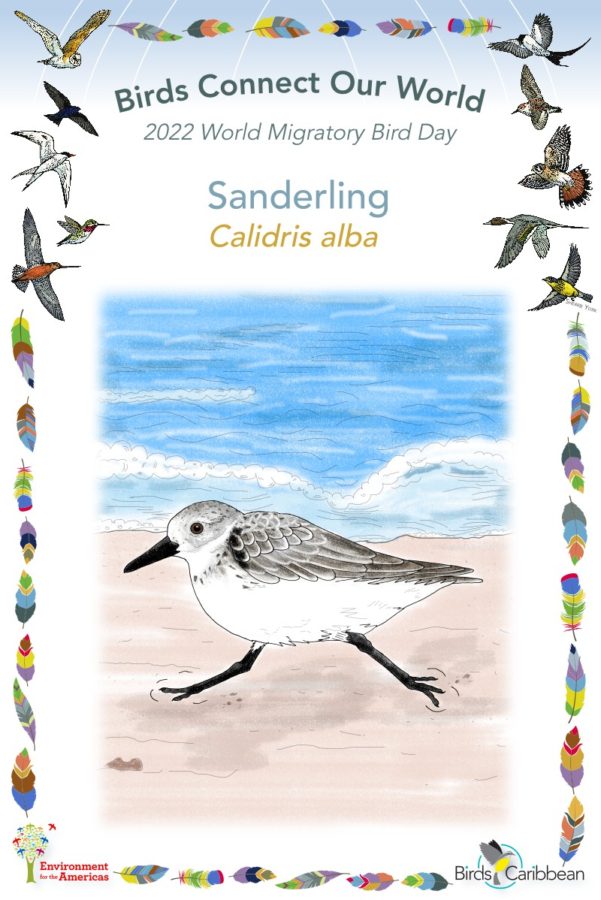Celebrate World Migratory Bird Day (WMBD) with us in 2022! This year’s theme is “Dim The Lights for Birds at Night”. Have fun learning about a new migratory bird every day. We have colouring pages, puzzles, activities, and more. Download for free and enjoy nature with your family at home.
Migratory Bird of the Day: Sanderling
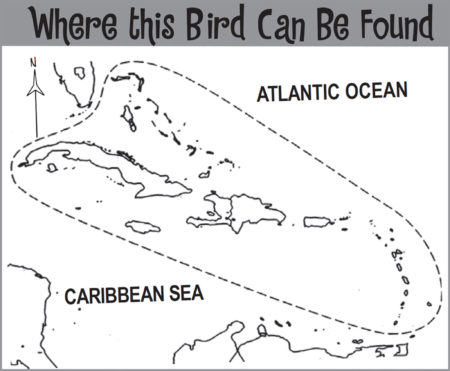 These striking pale-coloured sandpipers are easy to pick-out from other ‘peeps’ (small sandpipers). In their winter colors they have an almost black and white appearance, with black legs and bill and plumage that is pale gray above and white below. You can also look out for a distinctive black shoulder bar, which helps you to be sure you’re seeing a Sanderling. However, perhaps it is their behavior that really gives them away. These ‘wave-catchers’ are constantly running into and out of the surf edge in search of food. Often you’ll see small flocks of them, dashing back and forth along the sand in a blur of black legs and white feathers.
These striking pale-coloured sandpipers are easy to pick-out from other ‘peeps’ (small sandpipers). In their winter colors they have an almost black and white appearance, with black legs and bill and plumage that is pale gray above and white below. You can also look out for a distinctive black shoulder bar, which helps you to be sure you’re seeing a Sanderling. However, perhaps it is their behavior that really gives them away. These ‘wave-catchers’ are constantly running into and out of the surf edge in search of food. Often you’ll see small flocks of them, dashing back and forth along the sand in a blur of black legs and white feathers.
During the breeding season the Sanderlings gray plumage becomes a striking brick-red. They nest in the far north, in high-arctic tundra. But in winter, these ultra long-distance migrants become one of the most wide-spread shorebirds in the world! At this time of year they can be found on almost any temperate or tropical sandy beach, anywhere across the globe. Of course, with our beautiful beaches, this includes the Caribbean.
During each year a proportion of juvenile Sanderling, who are not ready to breed, choose to take a beach holiday. Rather than making the long journey back to the arctic to breed they stay on their wintering grounds. This means they get an extra long rest, and have a better chance to build up their energy reserves before their long migration north the next year.
As a very wide-spread bird, Sanderling populations are not considered to be under threat. However, because Sanderlings love to hang out at beaches, just like people, in some places they are losing access to their habitat. This is from both coast development and increased disturbance by humans at beaches. It’s important that we remember to make space for our birds and share the shore with these beautiful wave-catchers. Learn more about this species, including its range, photos, and calls here.
Colour in the Sanderling
Download the Migratory Birds of the Day Colouring Page! Use the picture above and the photos on this page as your guide, or you can look up pictures of the bird online or in a bird field guide if you have one. Share your coloured-in page with us by posting it online and tagging us @BirdsCaribbean #WMBD2022Carib
Listen to the calls of the Sanderling
Sanderling call softly to each other within a flock with a squeaky “wick wick” call.
Puzzles of the Day
Click on the images below to do the puzzle. You can make the puzzle as easy or as hard as you like – for example, 6, 8, or 12 pieces for young children, all the way up to 1,024 pieces for those that are up for a challenge!
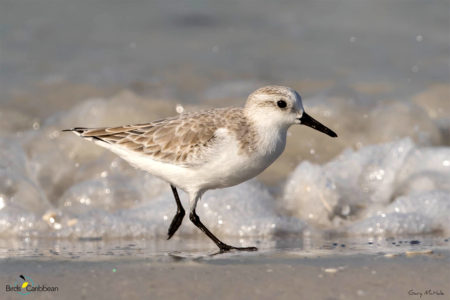
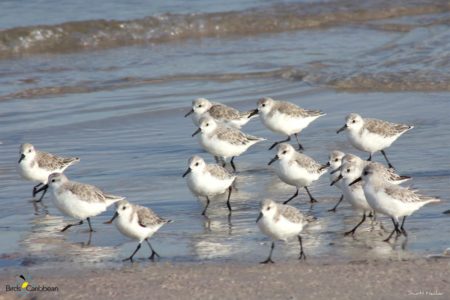
Activity of the Day
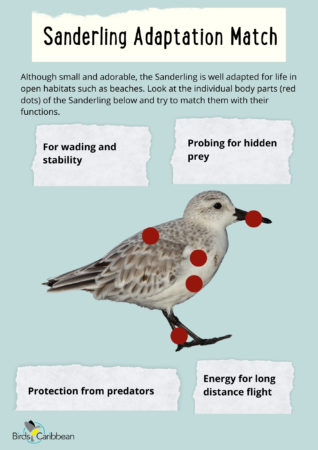 FOR KIDS: Many migratory shorebirds have special features that mean they are perfectly adapted for life on on the mud and sand. These adaptations can range from the shape of their bill and the position of eyes, to the length of their legs and the colours of their feathers. Of course Sanderlings spend a lot of time at the beach. Can you match the Sanderling adaptations to their functions ?
FOR KIDS: Many migratory shorebirds have special features that mean they are perfectly adapted for life on on the mud and sand. These adaptations can range from the shape of their bill and the position of eyes, to the length of their legs and the colours of their feathers. Of course Sanderlings spend a lot of time at the beach. Can you match the Sanderling adaptations to their functions ?
There are four ways in which Sanderlings are adapted for a beach life given, all you need to do is match them up to the correct body part on the Sanderling. You can find the correct answers here. Sanderlings are often seen feeding and flying together in groups. When you download our Sanderling adaptations answer sheet you can also read all about some of the reasons why Sanderlings like to feed together in flocks, and about how this helps protect them from predators, like birds of prey.
FOR KIDS AND ADULTS: Enjoy this video of a flock of Sanderlings feeding together at a the beach! You can see them running back and forth into and out of the waves in search of food. This is typical Sanderling behaviour and is why some people call them ‘wave-catchers’.

